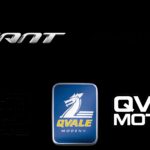The Daimler Car Company, now known as Mercedes-Benz Group, has a rich history spanning over a century. From its humble beginnings in Germany to its current status as a global automotive leader, Daimler has consistently pushed the boundaries of innovation and luxury. This article delves into the history of the Daimler car company, highlighting its key milestones, mergers, and evolution into the modern Mercedes-Benz Group.
From Humble Beginnings to Global Powerhouse: The Daimler Story
The Daimler story begins with two pioneering German engineers, Karl Benz and Gottlieb Daimler, both credited with independently inventing the gasoline-powered automobile engine in the late 19th century. Benz developed his first single-cylinder engine powered vehicle in 1885, while Daimler patented a three-wheeled gasoline-powered vehicle in 1885 and founded Daimler-Motoren-Gesellschaft in 1890. The first Daimler luxury car was sold in 1889. In 1901, the iconic Mercedes brand was born, named after the daughter of Emil Jellinek, a Daimler investor.
In 1926, these two rival companies merged to form Daimler-Benz, laying the foundation for the future automotive giant. The merger combined the engineering prowess of both companies, leading to the development of the iconic Mercedes-Benz S series and the introduction of diesel engines in passenger cars in 1936. Daimler-Benz played a significant role during World War II, producing engines for German military vehicles, but its factories were heavily damaged by Allied bombing.
Post-War Growth and the Chrysler Merger
Following the war, Daimler-Benz experienced significant growth, becoming Germany’s largest automaker by the 1980s. The company diversified into various high-tech industries but faced financial challenges, leading to restructuring and workforce reductions in the mid-1990s. In 1998, a landmark “merger of equals” occurred between Daimler-Benz and Chrysler Corporation, creating DaimlerChrysler. This merger aimed to leverage the strengths of both companies, but ultimately proved unsuccessful.
The DaimlerChrysler Demise and the Birth of Mercedes-Benz Group
The DaimlerChrysler merger faced numerous challenges, including cultural differences and differing brand identities. The Chrysler division struggled financially, leading to its sale in 2007. Subsequently, DaimlerChrysler was renamed Daimler AG. In the following years, Daimler focused on reviving its luxury image, investing in electric and autonomous vehicle technology, and expanding its AMG high-performance line.
In 2021, Daimler underwent a significant restructuring, spinning off its truck and bus division into a separate entity, Daimler Truck Holding AG. This strategic move allowed Daimler to concentrate on its core luxury passenger vehicle business. To reflect this renewed focus, Daimler AG was renamed Mercedes-Benz Group in 2022, solidifying the iconic Mercedes-Benz brand as the centerpiece of the company’s identity. Today, the Daimler legacy continues through the Mercedes-Benz Group, a testament to the enduring power of innovation, luxury, and a commitment to automotive excellence.
The Future of Daimler: Continued Innovation
The Daimler car company, under the banner of Mercedes-Benz Group, continues to innovate and adapt to the evolving automotive landscape. The company’s focus on electric vehicles, autonomous driving technology, and luxury experiences positions it for continued success in the years to come. The legacy of Karl Benz and Gottlieb Daimler lives on, driving the future of the automobile.

